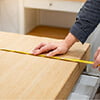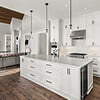8 Cabinet Joints For Your Home Improvement Project

There are many ways to join wood together when building a cabinet. With so many types of cabinet joints to choose from, it can be confusing and hard to decide which type of joint is best for your next woodworking project. Thankfully, we've got you covered with everything you need to know about the best and most popular cabinet joint options out there.
1. Dowel Joint
Dowel joints use extremely strong round pins to reinforce weaker joints such as miter and butt joints. These joints are physically attractive because they aren't visible from the exterior and, if constructed well, will create better alignment in your cabinets.
An advantage of dowel joints is that they don't need metal fasteners, which can upset the grain patterns when twisted into the wood. Dowels are typically made of strong woods such as maple, mahogany, birch, or poplar.
Best for: Dowel joints are best for reinforcing shelving in cabinets.
Pro tip: Dip your dowel joint in glue before driving it into its individual hole. Make sure the cabinets and joints fit together properly by testing each dowel without glue to avoid permanent mistakes.
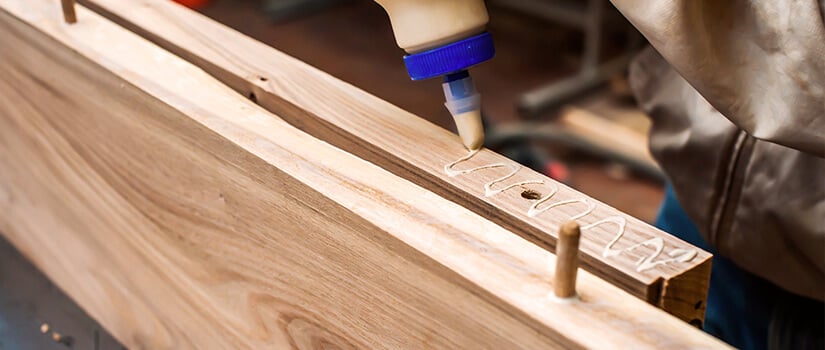
2. Rabbet Joints
Rabbet joints are some of the most popular styles for building cabinets. This joint has a channel cut along the side of the wood workpiece, creating a 90-degree angle. This creates extra surface area to glue a straight board to the angled cut-out.
Use a double rabbet joint if you need a stronger joint. This style uses two pieces of wood with recesses along the side of the plank creating two 90-degree angles attached to each other. This allows for more gluing surface area, making the bond stronger than a basic rabbet joint. Use glue and nails to secure whichever rabbet joint you choose.
Best for: Rabbet joints are best for building bookcases, cabinets, and small woodworking projects.
Pro tip: A rabbet joint is a great option if you're building cabinetry that will hold heavy items such as plates or glassware.
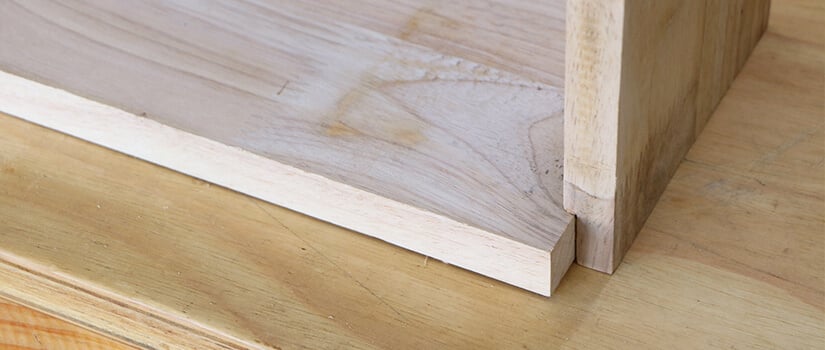
3. Mortise And Tenon Joint
Mortise and tenon joints are some of the strongest and most popular cabinet joints. They're made up of two wood pieces that work together to lock the pieces into place. The tenon has a piece of wood sticking out from its base, while the mortise has a slot for the tenon to slide into it.
This type of joint can either be square or round. Mortise and tenon joints are typically assembled at a 90-degree angle, but many other possible variations are available depending on your project. This type of joint is similar to a dovetail (which we'll cover more later) but less visually appealing.
Best for: Mortise and tenon joints are best for attaching chair legs or shelves to bookcases or cabinets.
Pro tip: Apply glue to the joint after you've determined that your mortise and tenon joints are the right size and shape. Add a screw or nail to lock the wood pieces together for extra resilience.
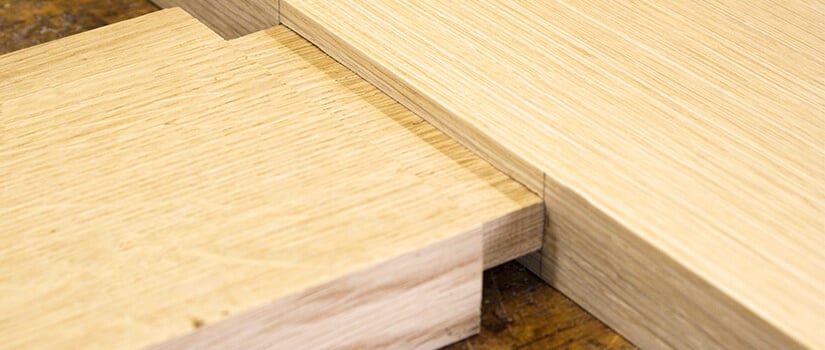
4. Tongue And Groove Joint
Tongue and groove joints are unique because they attach two pieces of wood at the edges of each plank. There are two types of tongue and groove joints. The first kind has a divot running the length of a wood workpiece, while the other part has an extension jutting out to fit into the divot.
The second kind of tongue and groove joint is where two identical pieces of wood have grooves running along the edge of each plank. A long piece of wood is then wedged between the two pieces of wood to hold them together.
Tongue and groove joints are incredibly strong, and their simplicity makes it easy to use them for creating flat surfaces. They are usually used with plywood, cedar, or other strong woods.
Best for: Tongue and groove joints are best for flooring, cabinetry, wall paneling, ceilings, and sides of furniture.
Pro tip: Do not glue tongue and groove joints when building cabinets because, over time, shrinkage caused by the glue will eventually push the tongue out of alignment.
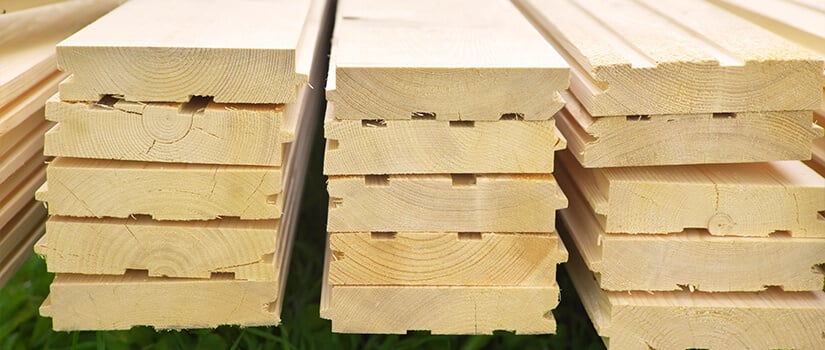
5. Pocket Joints
Pocket joints have medium strength. They are stronger than soft woods such as pine and redwood but weaker than strong woods like mortise and tenon or dowel joints. These joints are created by drilling a hole into a piece of wood at a 15-degree angle. This piece of wood is then hooked onto a self-tapping screw protruding from another piece of wood.
Use at least two screws for each joint when constructing cabinets and always insert screws into the face grain. Pocket joints are typically made of hardwoods such as oak, maple, and poplar.
Best for: Pocket joints are extremely versatile and best for assembling structural frames or cabinets.
Pro tip: It's essential to use the proper spacing between pocket holes to avoid breakage or cracks. Space your holes about two inches apart at the end of a piece of wood and space pocket holes six inches apart along the side of the plank.
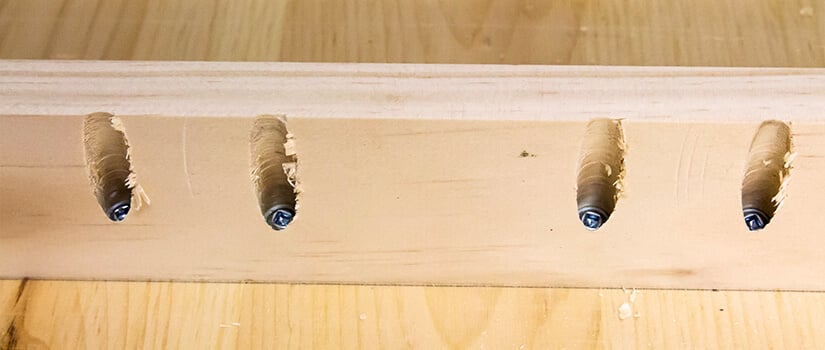
6. Dado Joints
A dado joint has a three-sided channel cut against the grain of a wood board. Dado joints have a trench carved into the surface of the wood for another piece of wood to fit perfectly into the groove.
There are several variations of dado joints, but all use grooves along the channel to connect two pieces of wood. The three types of dado joints are through joints, stopped joints, and rabbet and dado joints. Dado joints are extremely strong and simple to make.
Best for: Dado joints are best for cabinet frames and bookshelves.
Pro tip: Use a dado blade or table saw to get a precise cut into your wood for an accurate and level dado joint.
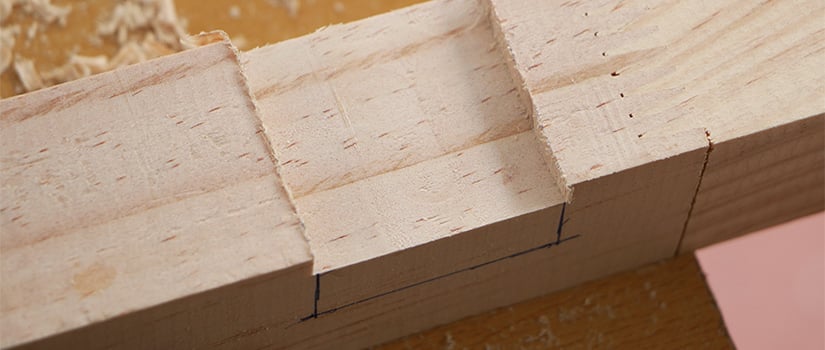
7. Half-Lap Joint
Half-lap joints are known for maintaining even thickness of the wood used throughout the joint. These joints are made by cutting equal divots into two pieces of wood. These two wood pieces should be the same height and thickness as the rest of the wood plank when overlapped at a 90-degree angle.
Add glue or screws to the area where they overlap to secure the joint. Half-lap joints are strong and great for building cabinets.
Best for: Half lap joints are best for furniture projects such as tables, desks, dressers, and cabinetry.
Pro tip: Half-lap joints work best when you're using wood that is two inches thick. Using thinner wood can result in diminished strength throughout the structure.

8. Dovetail Joint
Dovetail joints are strong and long-lasting but are much more difficult to build than other joints. Dovetail joints have small divots cut along the side of two wood workpieces, which create trapezoid-shaped pins that protrude out of the wood.
The second board should have identical divots and pins except they should alternate spaces so they can interlock creating a strong hold. This type of joint doesn't require any mechanical fastenings after gluing them together.
Best for: Dovetail joints are best for building boxes, shelves, and cabinets.
Pro tip: Make your dovetails slightly larger if you're using softwood -- over time, the wood will compress and make a tighter joint.
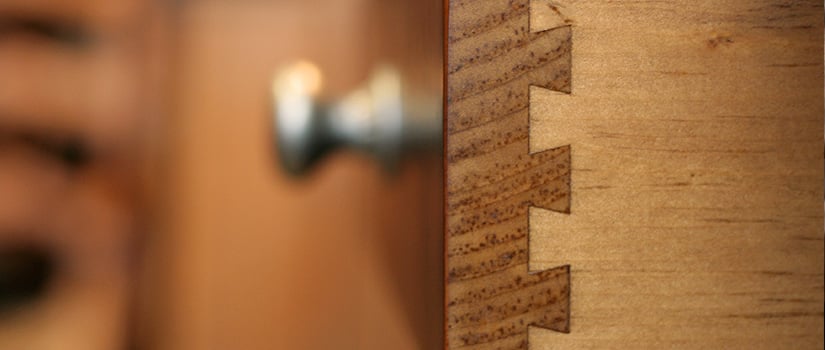
Cabinet Joints FAQs
If you're trying to decide which cabinet joints will work best for your project then you've come to the right place. To ensure you have all of the details you need to make your best decision, we've included a list of answers to the most common questions people have about kitchen cabinet joints.
What Joints Are Used For Cabinets?
The dowel joint is the most common type of joint for cabinets because of its strength and physical attractiveness. Tongue and groove, mortise and tenon, rabbet, pocket, dado, dovetail, and half-lap joints can also be used for cabinets.
What Is a Good Joint For Shelves in a Cabinet?
A dado joint is the best joint for shelves in cabinets because of its simplicity and strength. Rabbet joints are another good alternative for cabinet shelves.
What Is The Strongest Wood Joint?
Mortise and tenon joints are some of the strongest wood joints out there. Use glue to increase the sturdiness of this joint when assembling your cabinetry.
How Do You Join Cabinet Sides?
Join cabinet sides together by aligning both sides of the cabinet and connecting them with cabinet joints.
If you want to skip the hassle of building your own kitchen cabinets, try out Kitchen Cabinet King's pre-assembled cabinets that are ready to install right out of the box.
Sources: Craftsman Space | DC Drawers | Fine Power Tools | KalTimber | Copeland | Spruce Crafts | Home Atmosphere







